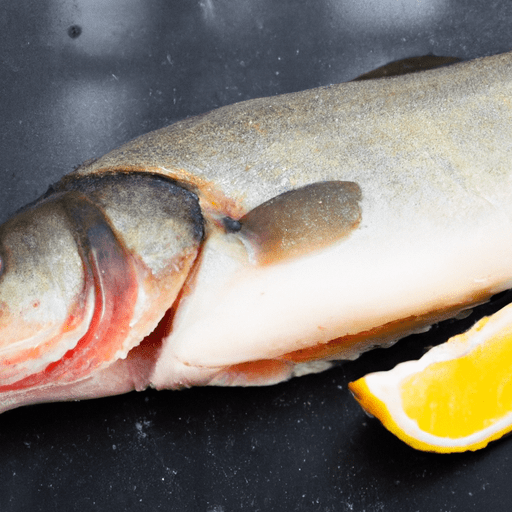Discover the Delights of Chilean Sea Bass
Are you looking to add a touch of elegance to your seafood dishes? Look no further than Chilean Sea Bass, a culinary gem that is guaranteed to impress even the most discerning palates. In this blog post, we will delve into the world of Chilean Sea Bass, exploring its taste, its versatility in cooking, its nutritional value, and uncovering some interesting history and facts about this prized fish.
Taste that Takes You to New Heights
Chilean Sea Bass, also known as Patagonian Toothfish, captivates the taste buds with its rich and buttery flavor. This fish is revered for its succulent, melt-in-your-mouth texture, making it a true delicacy. Its meaty flesh is a beautiful white color and has a delicate flakiness that will leave you craving more.
A Versatile Ingredient for Culinary Creativity
One of the reasons why Chilean Sea Bass is so beloved by both professional chefs and home cooks alike is its incredible versatility in the kitchen. Thanks to its robust flavor, it pairs well with a variety of ingredients and cooking methods. Whether you grill it to perfection, sear it in a pan, or bake it to a golden crisp, the result will always be outstanding.
Chilean Sea Bass can be used as the star of a dish or as a complement to other flavors. It lends itself beautifully to various seasonings, sauces, and marinades, allowing you to experiment and create a wide range of culinary masterpieces.
Nutritional Bonanza
Apart from its exquisite taste, Chilean Sea Bass also boasts an impressive nutritional profile. Rich in omega-3 fatty acids, this fish is a heart-healthy choice that promotes good cardiovascular health. Omega-3s are known to reduce inflammation and provide numerous other health benefits, making Chilean Sea Bass a fantastic addition to your diet.
Additionally, Chilean Sea Bass is an excellent source of protein, which is essential for maintaining and repairing body tissues. It also contains important nutrients such as vitamin D, selenium, and potassium.
A History Steeped in Heritage
Beyond its culinary attributes, Chilean Sea Bass has a captivating history that adds to its allure. Native to the cold waters of the Southern Hemisphere, this fish was originally named the Patagonian Toothfish due to its toothy appearance. However, as popularity soared and demand increased, the name was changed to the more palatable Chilean Sea Bass to make it more appealing to consumers.
Overfishing has led to concerns about the sustainability of Chilean Sea Bass, and efforts have been made to ensure its future survival. Strict regulations and responsible fishing practices are now in place to protect this magnificent fish and preserve its delicate ecosystem.
Wrap Up
Chilean Sea Bass is a true culinary treasure that brings a touch of luxury to any meal. Its remarkable taste, versatility, and nutritional benefits make it a favorite among seafood enthusiasts. Whether you’re a seasoned cook or just starting out, don’t miss the opportunity to enjoy this incredible fish.
So why not treat yourself and your loved ones to a delectable dish featuring Chilean Sea Bass? From its rich flavor to its fascinating history, the journey of discovering this exceptional fish is a rewarding one that will delight your senses.
Chilean Sea Bass
Origin: Chilean sea bass, also known as Patagonian toothfish, is not actually a bass but a species of fish called Dissostichus eleginoides. It is native to the cold, deep waters surrounding Antarctica. The fish received its name due to its abundance in the waters off the coast of Chile.
Common Uses: Chilean sea bass is highly regarded for its mild, buttery flavor and delicate, flaky texture. It is often sought after for its versatility in cooking and can be prepared in various ways such as grilling, baking, sautéing, or poaching. It is commonly used in popular seafood dishes like miso-glazed Chilean sea bass, pan-seared Chilean sea bass, or Chilean sea bass with lemon butter sauce.
Nutritional Benefits: Chilean sea bass is an excellent source of protein, omega-3 fatty acids, and various vitamins and minerals. Omega-3 fatty acids are essential for heart health and can help reduce inflammation in the body. It is also a good source of potassium, selenium, and vitamin B12.
Unique Properties/Significance: Due to its popularity and overfishing, Chilean sea bass has faced significant challenges in terms of sustainability and conservation. Various organizations and fisheries have implemented measures to protect and manage the population of this species. It is important to ensure that Chilean sea bass is sourced sustainably and obtained from well-managed fisheries to support the long-term viability of the species.
Historical Significance: Historically, the Chilean sea bass was not well-known or heavily fished. It gained popularity in the 1990s after chefs discovered its flavor and texture. This led to increased demand and subsequent concern about its sustainability. Increased regulations and conservation efforts have since been put in place to protect the population of Chilean sea bass and ensure its future availability.




Use the share button below if you liked it.
It makes me smile, when I see it.